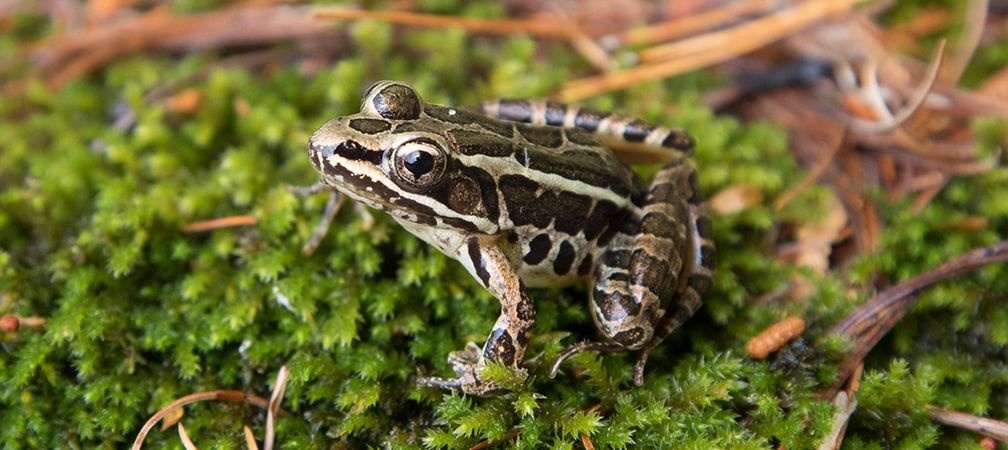Ontario Nature Blog
Receive email alerts about breaking conservation
and environmental news.
© Lora Denis
© Ryan Wolfe
As a GIS Analyst, I spend a lot of my time making maps and exploring the Ontario landscape from behind a computer screen. That’s why I jumped at the opportunity to visit the Frontenac Arch and the Eastern Ontario region of the Canadian Shield with our Conservation Technician, Ryan Wolfe, this past fall.
We went to conduct a property inspection of Lorelei, a beautiful tract of forested lakeshore on the Gananoque River between Crank and Red Horse Lake. The sheer cliffs at the edge of the forest fall into glassy green waters, which reminded the owners Ada and Joel Farber of the cliffs from a poem by Heinrich Heine of the same name. Ada and Joel kindly donated the property and we’re excited to announce that Lorelei will be added to our own Lost Bay Nature Reserve. When combined with the original reserve and the conservation easement being added, this will bring Lost Bay to 416 acres in size.

Our property inspections help us to check up on the health of our reserves. We look for biodiversity, note what species we find, and monitor for species at risk and species of interest. We also keep an eye out for threats to the reserves like invasive species, signs of illegal or intrusive activity such as dumping, and dangers such as fallen trees on trails. Through our visits, we’re able to keep our reserves in the best condition, providing a haven for wildlife and a space for humans to escape into nature.

On the day of the visit, we set off from Black Rapids on a canoe loaned to us by the Charleston Lake Provincial Park. Due to an ominous forecast, we set off at a brisk paddle across Red Horse Lake that morning. Despite the rush, we still caught sight of a great grey heron, some belted kingfishers, and a Caspian tern. Our concerns about the weather were whisked away when the sun broke through the clouds as we landed on Lorelei’s rocky shore.
We started our inspection by heading inland. I was conducting species identification, while Ryan began mapping out the different kinds of forest. As we hiked along, we passed through dense fronds of cedar and pine before finding a large mossy glade of oak, ash and maple. The forest floor was covered in ferns and fungus that were occasionally interrupted by cliffs and chunks of Canadian Shield rock breaking through the ground. We discovered vernal pools and stream beds that wound their way around tree roots at the base of rocky faces, creating the perfect breeding habitat for amphibians.

And amphibians we found in abundance! From the shrill call of spring peepers and the scream of a startled bullfrog, to a host of leopard frogs, green frogs, and pickerel frogs that we found by the water’s edge, we were able to record eight species of frog and toad despite being so far out of their typical active season. Additionally, from the top of a cliff overlooking the rocky shallows we caught sight of a basking log with painted turtles, map turtles, and a snapping turtle, and later found the shell of a Musk turtle. Thanks to Ryan, we also discovered a few garter snakes and the shed skin of a water snake. Finally, I was lucky enough to see my first beaver lodge and woodpecker hole, not common sights in the wilds of Southern England where I was living until 3 years ago.
It was wonderful to see this forest teeming with life. Adding Lorelei to our Lost Bay Nature Reserve will help us maintain a crucial corridor of riverside habitat, conserving a haven for turtles, birds, and amphibians. Visiting Lorelei is a warm memory of what the maps I make actually represent as we make our way through winter and my work keeps me behind my desk.

Thank you to each of our determined members and supporters who helped protect this biodiverse property. Ontario Nature gratefully recognizes the following funders for their support:


P.S. We have a new opportunity to expand our Lost Bay Nature Reserve by an additional 50 acres. We invite you to be a part of this exciting project to protect this property forever. You can give online or by calling 1-800-440-2366 ext. 233.

Gananoque Lake Nature Reserve © Smera Sukumar